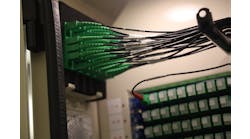The California Independent System Operator (CAISO) is confident its existing rules and processes will allow planned microgrids and resiliency projects to be built before the next wildfire season.
CAISO’s rules and procedures can handle the microgrids recently proposed by the state’s investor-owned utilities to help prevent planned power outages, the grid operator said in a California Public Utilities Commission filing last week.
The issue centers on a suite of microgrid proposals floated on Jan. 21 by Pacific Gas & Electric (PG&E), Southern California Edison (SCE) and San Diego Gas & Electric (SDG&E).
The proposals are driven by a new law (S.B. 1339) that seeks to spur microgrid development in the state. The PUC in December divided its microgrid proceeding (R.19-09-009) into two tracks and directed utilities to file microgrid plans that could be put in place by September 1, ahead of the upcoming wildfire season to reduce the effects of public safety power shutoffs — planned power outages designed to reduce fire risks.
“The CAISO fully supports the commission’s efforts to enable microgrids, enhance grid resiliency, and mitigate the impact of public safety power shutoffs,” the grid operator said in a Jan. 30 filing with the PUC.
CAISO well-situated for review
After studying the utility proposals, CAISO said its tariffs, study procedures and market processes are “well-situated” to facilitate the proposed microgrid plans.
“CAISO anticipates that its study process and participation models already can accommodate the commission’s desire to bring selected resources online expeditiously,” the grid operator said.
Discussions already underway with PG&E
PG&E has already approached CAISO to discuss how the utility can put its planned microgrids in place quickly and efficiently, according to the grid operator.
The utility proposals generally consist of new, in-front-of-the-meter generators, including storage devices, at the distribution level, CAISO said, noting that those types of resources come online frequently and that the grid operator and the utilities have robust processes to coordinate interconnection studies.
“The CAISO fully supports the commission’s efforts to enable microgrids, enhance grid resiliency, and mitigate the impact of public safety power shutoffs.”
CAISO said it supports a PUC staff proposal to allow energy storage facilities that qualify for net energy metering to import power from the grid ahead of planned power shutoffs, but not to be allowed to export electricity ahead of the outages.
Wave of utility microgrids
The grid operator will play a key role in bringing online a wave of microgrid projects set for this year.
PG&E, for example, is proposing to spend $187.4 million this year on microgrid and resiliency projects, according to a utility presentation at a Jan. 27 PUC meeting. The utility wants to spend $175.3 million on a “temporary generation” program that calls for having 300 MW of mobile generation that can be used to create temporary microgrids
The utility also plans to spend $8.6 million this year on creating substation-based microgrids and $3.5 million to prepare for community-based microgrids.
SCE and SDG&E have more modest plans for this year, according to the utilities’ presentations. SCE is proposing a pilot project to study where on its grid multi-customer microgrids have the best potential to cost-effectively mitigate planned power outages. SDG&E plans to buy a microgrid controller and intends to install electric vehicle charging stations within several microgrids the utility was already setting up.
Track news about California microgrids. Subscribe to the always free Microgrid Knowledge newsletter.







